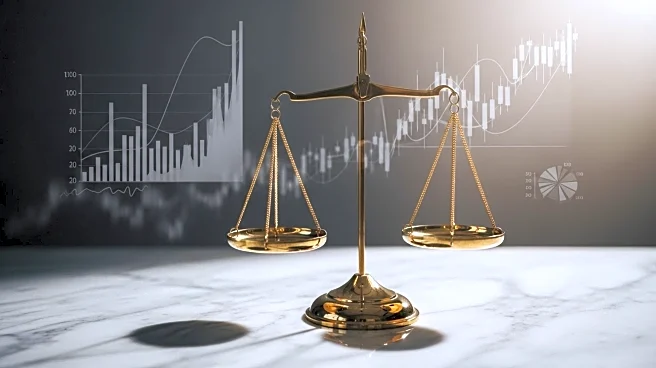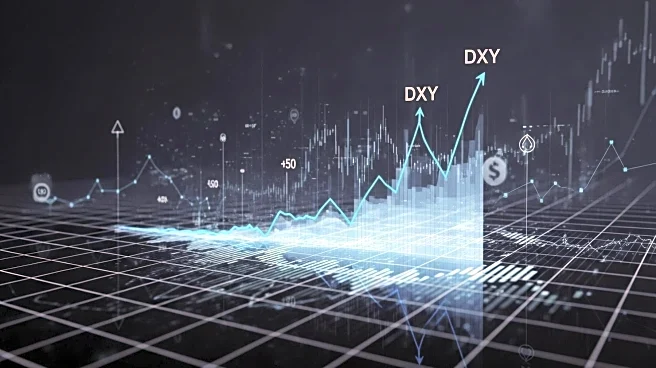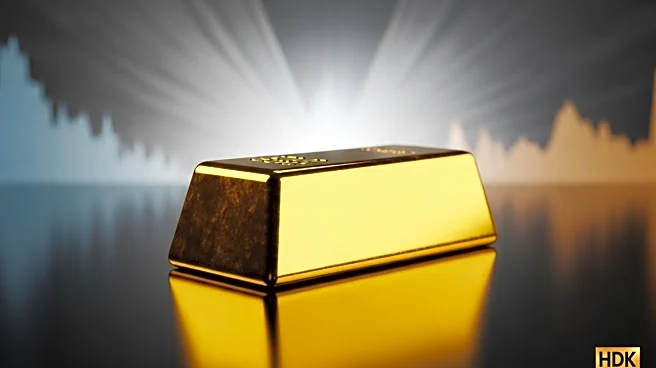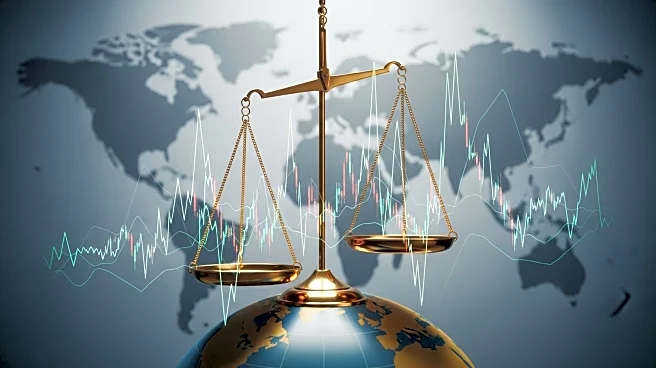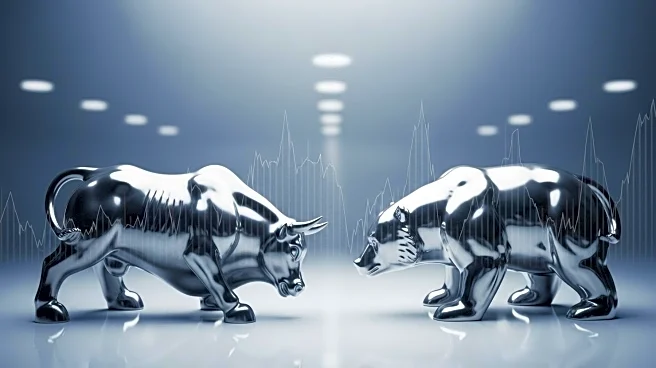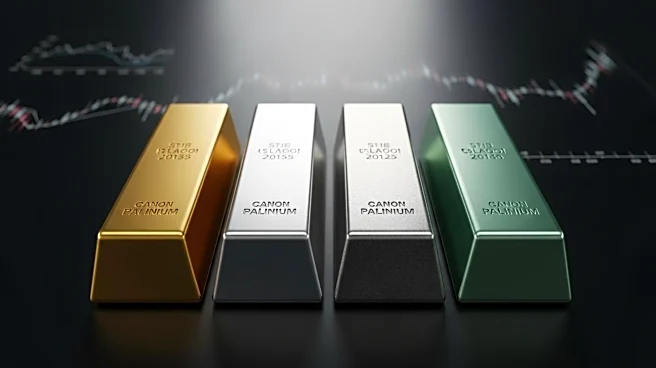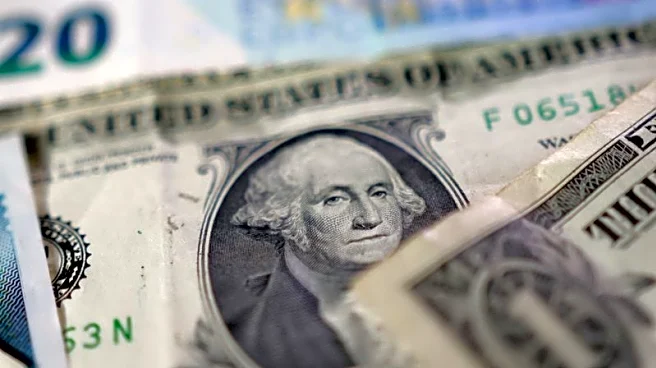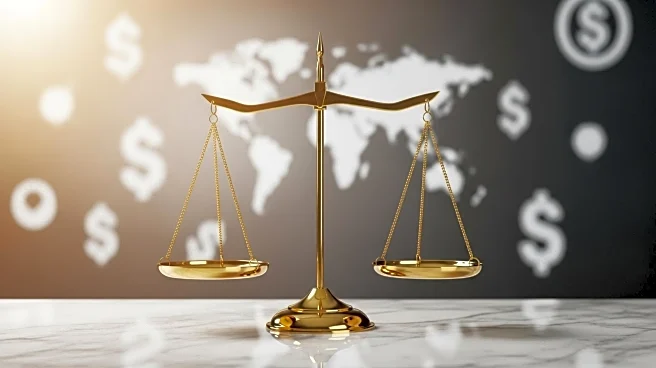What's Happening?
Gold prices have continued their upward trajectory, reaching approximately US$3,780 per ounce as of September 29, 2025. This increase is largely driven by expectations of further interest rate cuts in the United States and a weakening dollar. According to Trading Economics, there is a 90% chance of a rate cut in October 2025, with a 65% probability of an additional cut in December. The price of gold has risen by 0.27% from the previous day and has seen an 8.69% increase over the past month. Compared to the same time last year, gold prices have surged by 43.37%. The rise in gold prices is attributed to structural factors rather than speculation, with significant accumulation by central banks being a key driver. Central banks have purchased over 1,000 tonnes of gold annually from 2022 to 2024, marking the highest sustained pace on record.
Why It's Important?
The surge in gold prices has significant implications for various stakeholders, including investors, central banks, and the broader economy. As a safe-haven asset, gold is often sought after during times of economic uncertainty, and its rising price reflects concerns about potential economic instability. The anticipated rate cuts in the US could further impact the dollar's value, making gold an attractive investment. Central banks' continued accumulation of gold suggests a strategic move to diversify reserves and hedge against currency fluctuations. This trend could influence global financial markets and monetary policies, as countries adjust their strategies in response to changing economic conditions.
What's Next?
If the US Federal Reserve proceeds with the anticipated rate cuts, it could lead to further depreciation of the dollar, potentially driving gold prices even higher. Investors and financial institutions may continue to increase their gold holdings as a hedge against inflation and currency volatility. Additionally, central banks might maintain or even accelerate their gold purchasing strategies, reinforcing the metal's role as a critical component of national reserves. The ongoing economic developments will likely prompt further analysis and adjustments by policymakers and market participants.
Beyond the Headlines
The sustained increase in gold prices highlights broader economic and geopolitical shifts. As central banks accumulate gold, it reflects a strategic move to reduce reliance on fiat currencies and mitigate risks associated with global economic uncertainties. This trend could lead to long-term changes in how countries manage their reserves and approach international trade. Moreover, the focus on gold underscores the importance of tangible assets in an increasingly volatile financial landscape, prompting discussions on the future of currency and investment strategies.


